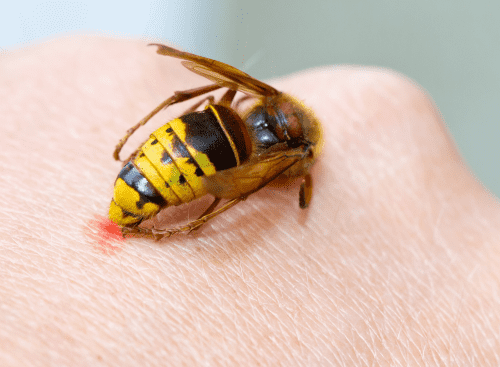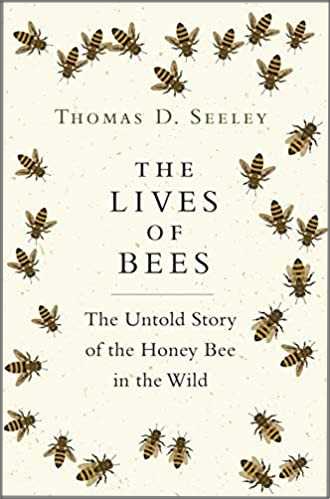The Dufour's Gland In Honey Bees
The
Dufour’s gland was identified in some insects by Leon Jean Marie Dufour in 1841.
It is an anatomical feature of the Apocrita – a sub-order of the Hymenoptera,
that consists of bees, wasps and ants.
Whilst all bees have a Dufour's gland, this page specifically looks at the Dufour's gland in the honey bee.
The Dufour's Gland In Honey Bees
What is the Dufour’s gland?
The Dufour's gland is
specifically an exocrine gland. The Dufour’s gland releases chemicals through a duct.
These chemicals can be external signals, or may have another physiological effect within the body itself.
What is an exocrine gland?
An exocrine gland is a gland that creates chemicals that are then released through a duct onto an outer surface or skin.
For example, in humans the lacrimal glands (tear ducts and glands near each eye), and eccrine sweat glands (that release perspiration) are examples of exocrine glands.
Exocrine glands are different from endocrine glands, which release chemicals directly into the blood in humans. The pituitary gland and the thyroid gland are examples of exocrine glands.
Where is the Dufour's gland located?
As with other hymenopterans: wasps, ants and other bees, in honey bees the Dufour's gland is in the abdomen.
The Dufour's gland is located in the sting shaft in both queen and worker honey bees.
What is the function of the Dufour's gland?
In queens, secretions from the Dufour's gland perform as part of the multi-sourced queen signal.
In workers, the Dufour's gland secretes alarm pheromone.
Does The Dufour’s Gland Aid Worker Policing Of Non-queen Eggs?
It has been proposed that the Dufour’s gland
may play an important role in the ability of worker honey bees to distinguish
between queen-laid eggs and worker-laid eggs, but has this theory been proven?
The concept of ‘worker policing’ (worker bees killing, removing or neglecting eggs laid by fellow workers) in honey bees has been recognised for some time.
For example, Ratnieks & Visscher (1989)1, Oldroyd & Ratnieks (2000)2, and Katznav-Godansky (2001)3 have all described the phenomenon in which worker bees are able to distinguish between queen-laid eggs and worker-laid eggs, and then destroy them.
This raises the question as to how honey bee workers recognize and distinguish between queen-laid eggs and worker-laid eggs.
Located in the ovipositor, could the Dufour’s gland somehow aid bees in worker egg recognition?
Perhaps. Ratnieks (1995)4
proposed that specific Dufour’s gland secretions on queen-laid eggs act as a
pheromone that induces worker bees to perform normal care duties.
Meanwhile, the absence of the same Dufour’s gland queen-pheromone on worker-laid eggs induces worker bees to destroy them.
However, it has subsequently been
shown to be more complex than that! Why?
It is known that Dufour’s gland pheromones
consist of two broad components:
- esters and
- hydrocarbons.
Is ‘worker policing’
affected by one or both of these components?
This is an important question, because it is known that egg-laying workers can also produce the ester component of Dufour’s gland secretion (Katznav-Godansky, 2001).
However, this does not prevent the removal of worker-laid eggs, thus suggesting that the ester component of the secretion is not responsible for protecting the queen-laid eggs.
Martin et al (2002)5 also carried out some research to try to find out whether either of the two Dufour’s gland secretions were responsible for worker policing of eggs. They found the following ‘hierarchy of egg removal’.
Untreated worker eggs are removed more quickly than worker laid eggs with hydrocarbon treatment, which in turn are removed sooner than eggs with whole gland treatment, followed by those with ester treatment, and finally, queen laid eggs, which are tended by workers.
Below I have created a graphic representation of this hierarchy.
Hierarchy of honey bee egg policing and by workers

(Graphic - a BuzzAboutBees.net interpretation of data presented by Martin et al (2002).
However, Martin et al found that the differences between removal rates for worker-laid eggs disappeared after 20 hours, with worker-laid egg removal rates returning to normal.
They concluded:
“The esters and hydrocarbons stored in the queen’s Dufour’s gland do not appear to be the signal by which worker-laid and queen-laid eggs are distinguished by policing workers under natural conditions.”
Katzav-Gozansky (2001)3 came to the same conclusion, and added further to the work in a 2002 review article6 by suggesting that the queen’s Dufour’s gland secretions are more likely to be a ‘queen signal’ that confirms to workers that there is a queen within the colony.
In connection with this function, some research (Dor et al, 2005)7 has shown that when a colony loses its queen, reproductive capability is initiated amongst worker bees. It seems that the Dufour’s gland secretion may be an indicator of fertility.
Read about: The Function Of The Dufour's Gland In Bumble Bees
References
1. Ratnieks F.L.W., Visscher P.K. (1989) ‘Worker policing in honeybees.’ Nature 342: 796-797
2. Oldroyd B.P., Ratnieks F.L.W. (2000) ‘Evolution of worker sterility in honey-bees (Apis mellifera): how anarchistic workers evade policing by laying eggs that have low removal rates.’ Behav Ecol Sociobiol 47:268–273
3. Katzav-Gozansky T, Soroker V, Ibarra F, Francke W, Hefetz A (2001) ‘Dufour’s gland secretion of the queen honeybee (Apis mellifera): an egg discriminator pheromone or a queen signal?’ Behav Ecol Sociobiol 51:76–86
4. Ratnieks F.L.W. (1995) ‘Evidence for a queen-produced egg-marking pheromone and its use in worker policing in the honey bee.’ J Apic Res 34:31–37
5. Martin S.J. et al (2002) ‘Reassessing the role of the honey bee (Apis mellifera) Dufour’s gland in egg marking.’ The Science of Nature 89(11):528-32
6. Katzav-Godansky T. (2002) ‘Honey bees Dufour’s gland – idiosyncracy of a new queen signal.’ Apidologie 33(6):525-537
7. Dor T. et al, (2005) ‘Dufour’s gland pheromone as a reliable fertility signal among honey bee (Apis mellifera) workers.’ Behav Ecol Sociobiol 58: 270–276

